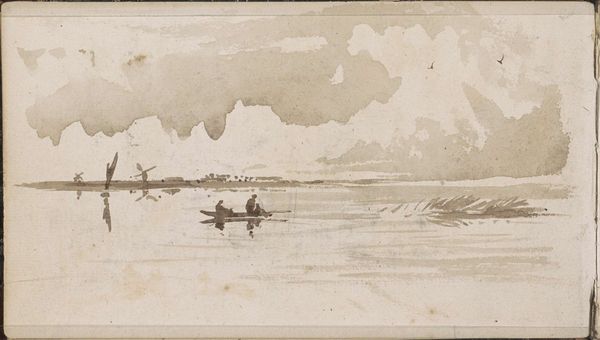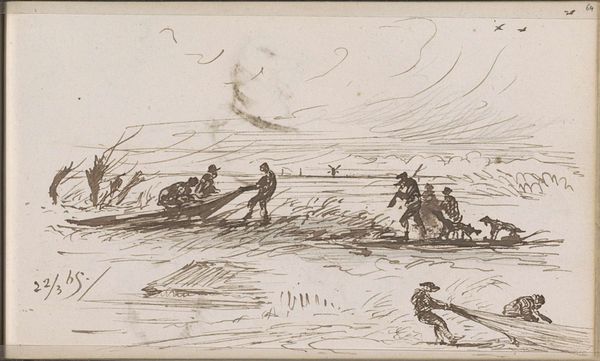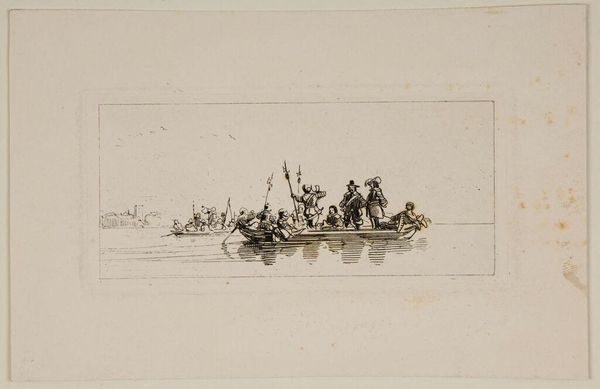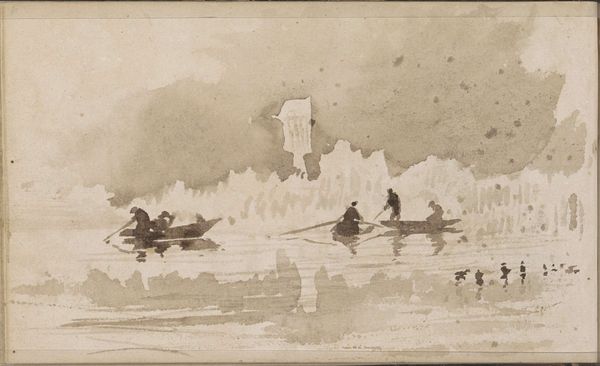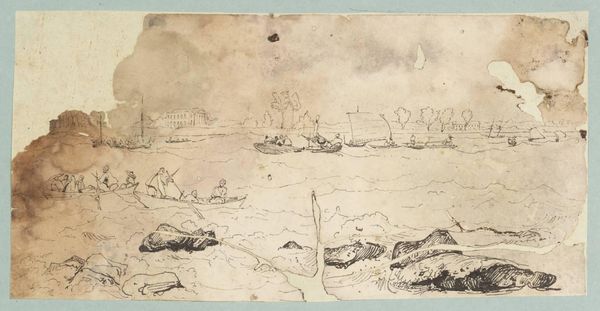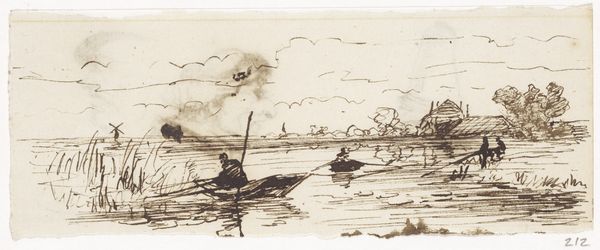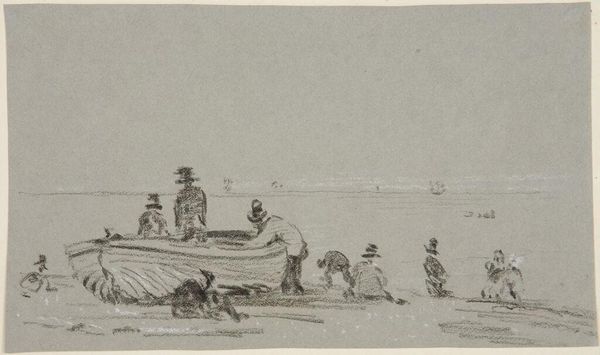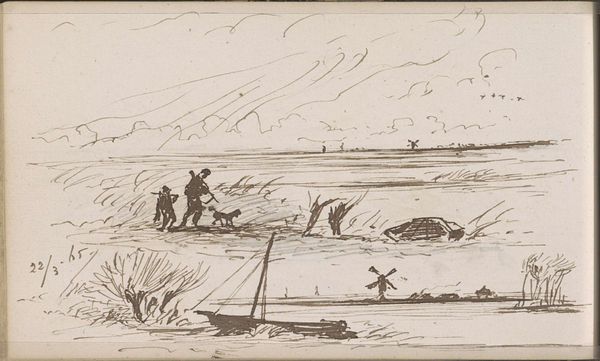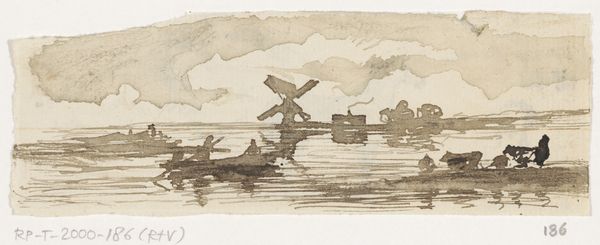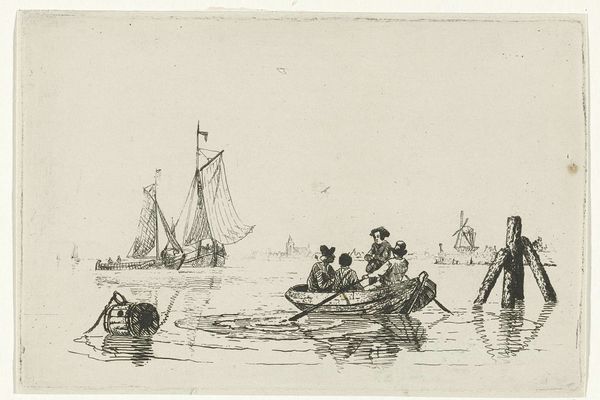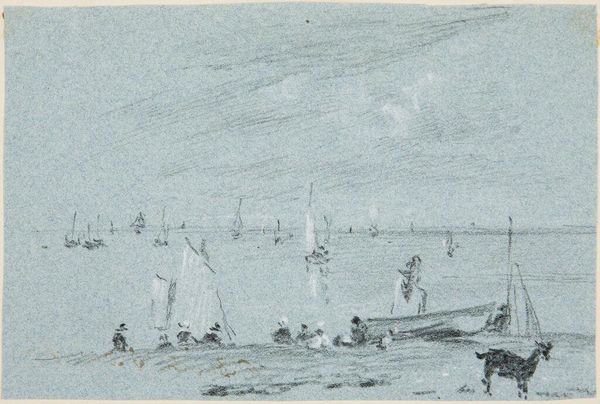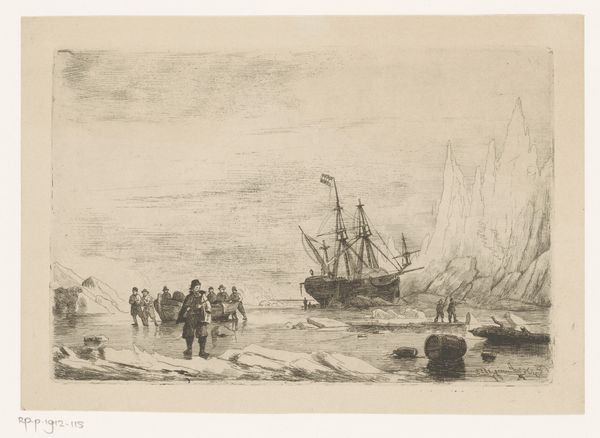
Copyright: Rijks Museum: Open Domain
Curator: This is Johannes Tavenraat’s "River Landscape with Skaters," created sometime between 1864 and 1880, part of the Rijksmuseum collection. Editor: The sepia tones give it an immediate feeling of aged paper, of something almost translucent, like looking at a memory. Curator: Tavenraat's choice of ink beautifully captures the Dutch landscape, doesn't it? We see figures skating across a frozen river, a scene of everyday life elevated. These winter landscapes became quite popular. Editor: What’s compelling is the immediacy of the medium – it is an ink drawing on paper, immediate, gestural, you sense the hand, the labor of Tavenraat trying to quickly catch that scene, that fleeting winter energy, it feels democratic somehow. Curator: Indeed. Consider the historical context. The 19th century was a time of increasing industrialization, but artists still looked to the countryside for subject matter. Here, winter transforms the landscape into a communal space, accessible to many. It is a shared experience. Editor: Absolutely, and the materiality contributes so much to that feeling. The swift, economical lines speak to the artist's skill in translating a complex scene using very accessible materials. Ink was cheaper than paint; it implies this vista was available to almost anyone to witness and participate in or even to represent. Curator: And the distribution of these images played a huge role. Think of the prints and illustrations in magazines. The representation of rural life affirmed cultural values during rapid change. These landscapes supported the nostalgic public vision of the pre-industrialized Netherlands. Editor: In other words, an appealing fantasy about what constitutes true, Dutch identity built from inexpensive raw materials, circulated and digested en masse? Curator: Precisely. I think it gives the drawing even greater social resonance, and I'm so grateful we get to contemplate all these social layers and more within the setting of our museum. Editor: I concur. Looking at the physical materials—the paper and ink—combined with what we see on the page adds depth and texture to the drawing and to our understanding of the culture.
Comments
No comments
Be the first to comment and join the conversation on the ultimate creative platform.

